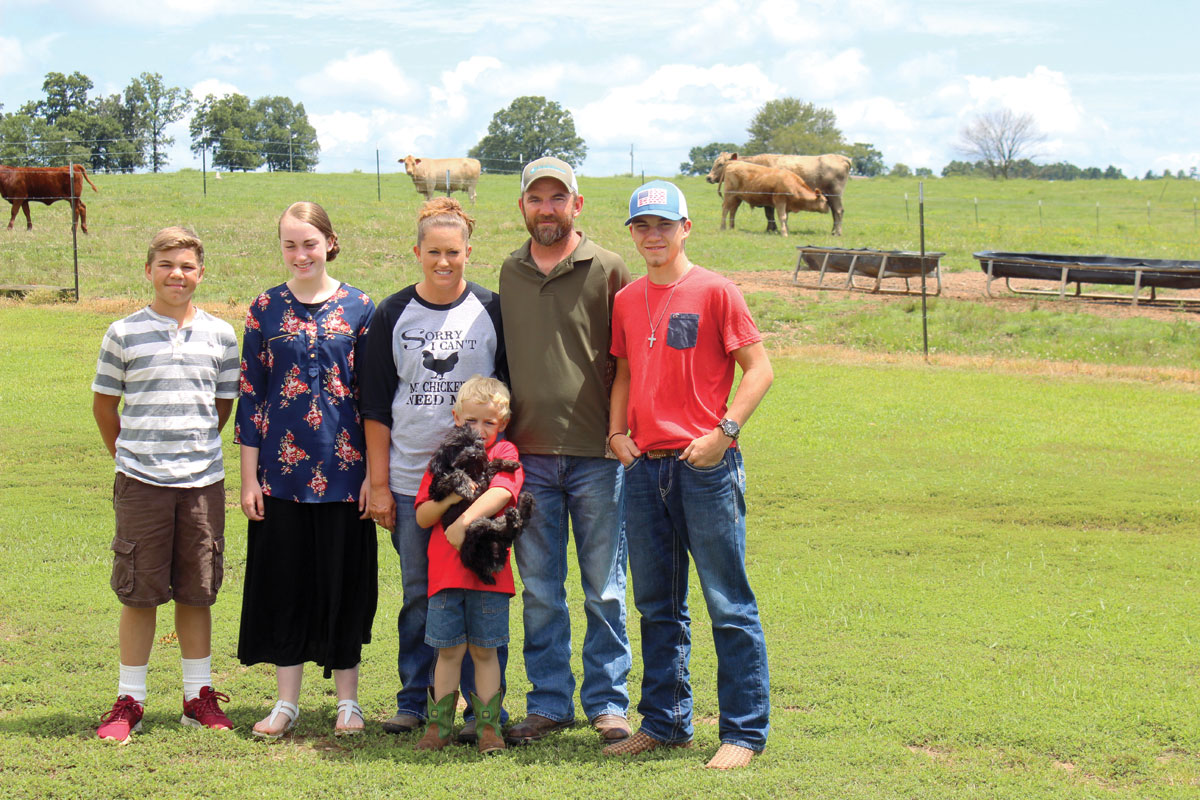 Sometimes becoming a farmer emerges from a desire to work for yourself and a love of the outdoors. This is the case with George Anderson of Springdale, Ark.
Sometimes becoming a farmer emerges from a desire to work for yourself and a love of the outdoors. This is the case with George Anderson of Springdale, Ark.
He graduated from the University of Arkansas with a degree in poultry science and worked as a field representative for Tyson and George’s for six years before he decided farming was a better choice for him.
In order to accomplish this, his wife Darla taught elementary school for eight years to supply necessary financial support until they could get a firmer foundation.
“At the time we were ready to start, land prices were outrageous and raising chickens made more sense,” George said.
After Ben, now 17, and Meghan, 21, were born, Darla needed to stay home with the family and help out on the farm.
“I am the bookkeeper, the gopher, part-time farmhand and head cook,” Darla said.
The Anderson’s now have close to 1,000 owned and leased acres in Washington, Benton and Madison counties, with land sections as far as 50 miles apart on which they raise both 7.25-pound chickens for George’s, Inc., and commercial cattle. This in addition to a small herd of 20 goats that started out as show goats for their children but became a passionate interest of Darla’s.
The Anderson’s have 12 chicken houses with four more nearing completion. One characteristic of the Anderson operation is a willingness to buy and sell land and/or chicken house sites. Through the years, they have had as many as 21 houses at one time. They do whatever makes sense at the time and will buy or sell when good opportunities arise.
The Anderson’s have changed their operation as the chicken industry evolved.
George’s first broiler house in 1996 contained automatic curtains, brood stoves and nipple drinkers. Remodeling was necessary in three years. Today all new chicken houses are identical, unlike their predecessors which displayed some variety.
One important example of construction changes through the years is the roof structure. Chicken houses started with steeper, sloped roofs with timber support, to wood trusses, then to steel trusses with gentler sloping roofs and now back to wood trusses with steeper sloped roofs. The reason for the most recent change is the addition of a flat ceiling with heavy insulation between the ceiling and the roof. The addition of the drop ceiling allows for better air movement through the chicken houses because of the smaller square footage of space housing the chickens. House sides are solid with chipboard and heavy insulation as well. Technology improvements have focused on controllers which control the fans, stoves and feed, with George believing improvements are going to soon include water pressure and volume, is especially important when flushing.
Another important evolution in the chicken industry is a focus on water quality because better water means better chickens.
Looking to the future and a time when the industry may require catching all of the water from the houses, George constructed a number of ponds to meet that possible future requirement, as well as provide water for his cattle.
“The word sustainability is often misused and the agriculture industry has long known that taking care of the environment sustains the profitability and longevity of production.
“I face two especially important challenges in my chicken operation. One is keeping up with scientific advancements to fine-tune my process for producing the most efficient bird. The more efficiently I raise my birds, the more money I make. The other challenge is finding employees who understand and are committed to the variable work cycle in the chicken industry.”
Employees must work seven days a week. The amount of work per day varies.
For example, much less time is needed after the new chicks arrive. The raising cycle is 53 days long, with two weeks of empty houses. Empty houses does not mean employees have no work, but does allow for more personal time.
Because the chicken portion of the Anderson operation has been so time intensive, the commercial cattle aspect has been slower growing.
The Anderson’s have 200 momma cows and 17 bulls, mostly Herefords. One Longhorn cross and three Corrientes are used for first-time heifers. George likes using Corrientes bulls, the breed that provides rodeo stock, because of the smaller-sized calves.
“We simply don’t have the time to pull calves, though, of course, we watch them closely,” Darla explained.
The Anderson’s have both spring and fall calves and market them as yearlings, striving for 700 pounds. George is considering selling bred heifers for the first time and returning to a Black Angus bull for those heifers in order to produce the most desirable sale animal.
The evolution of the Anderson cattle operation has included adding scales, installing cross fencing for rotational grazing and eliminating fescue so that pastures and hay fields are comprised of Bermuda, rye and winter wheat. Because George uses chicken fertilizer, all grasses and weeds will grow, which requires the use of a herbicide which, for the Anderson’s, eliminates clover.
Soil is tested every five years to ensure proper fertilization. “Over fertilizing is not cost-efficient and doesn’t help grass to grow better,” George said.”Farmers take care of the land as part of taking care of themselves.”







